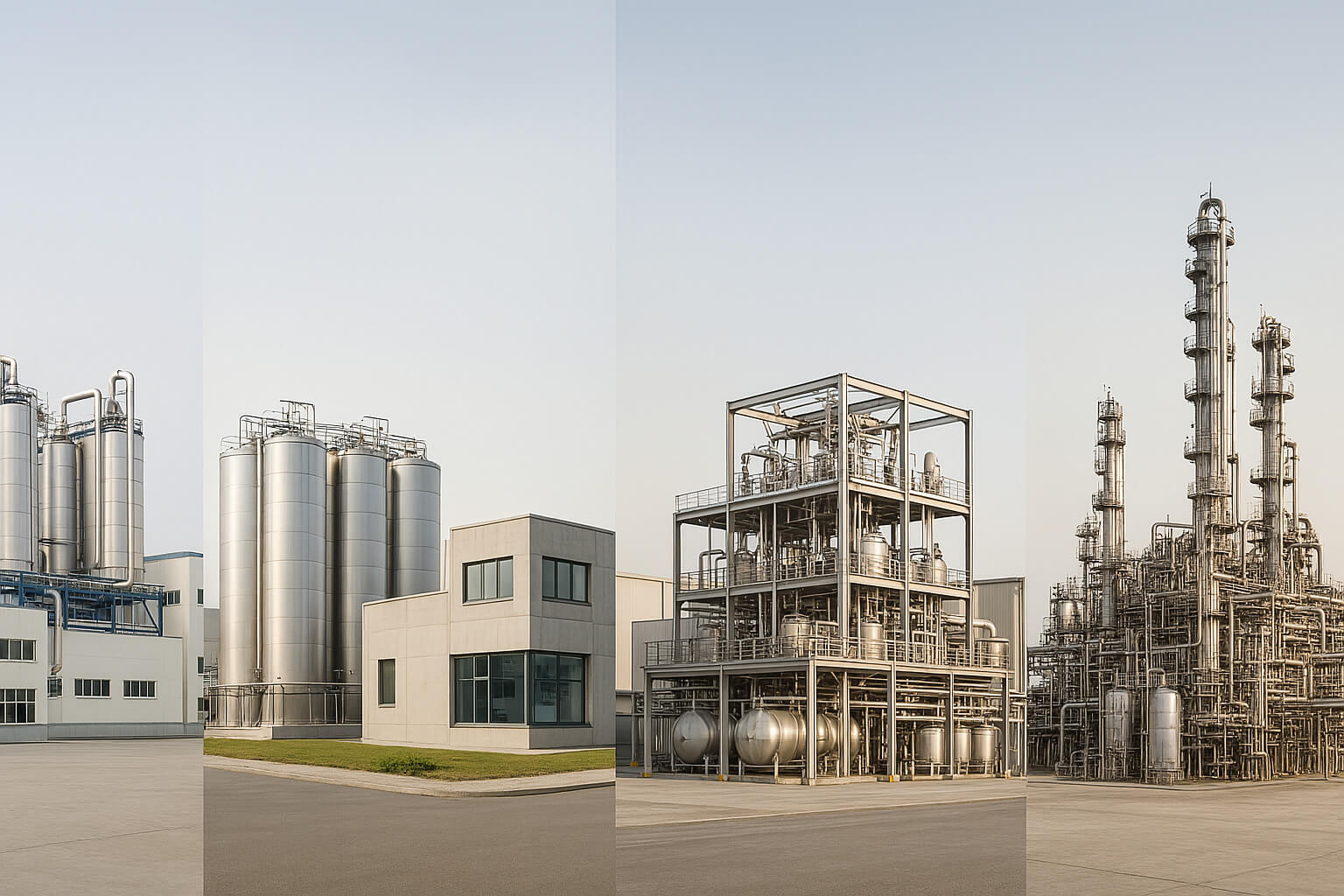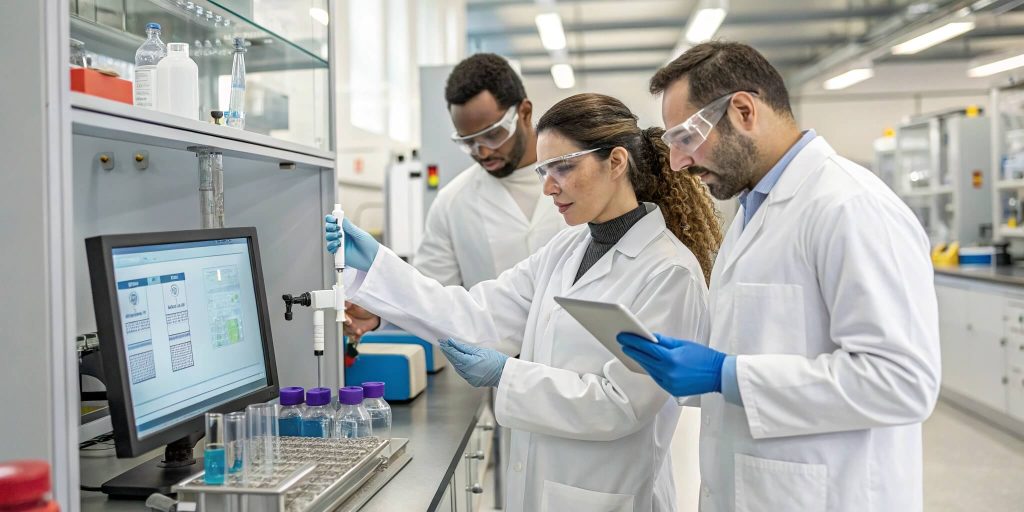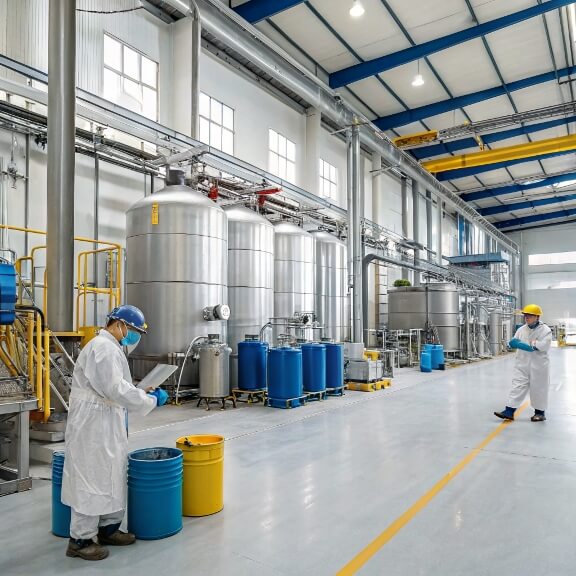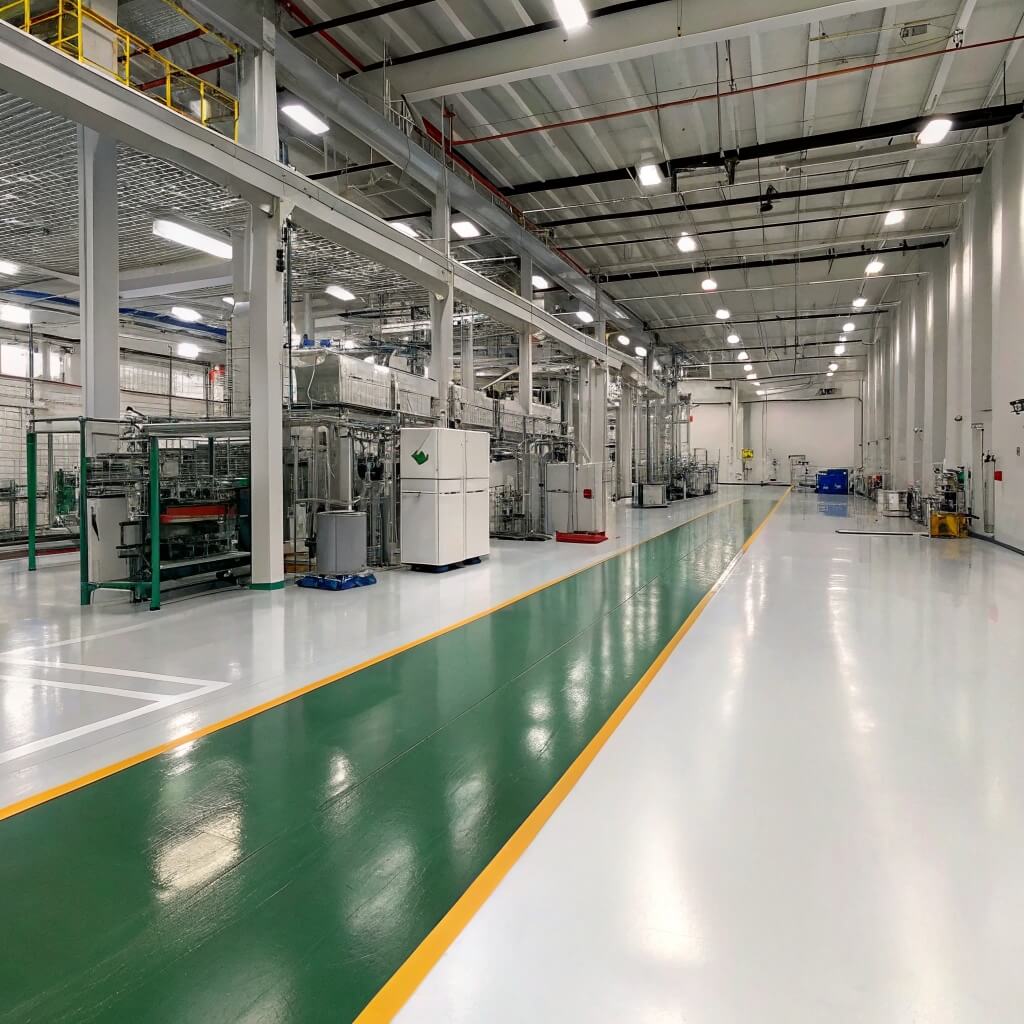Sourcing quality HPMC brings constant headaches for procurement managers. Finding reliable manufacturers often feels like searching for a needle in a haystack.
The global HPMC manufacturing landscape spans across Asia, Europe, and North America, with China leading production volume at approximately 70% of worldwide capacity, followed by India, Germany, USA, and Japan as key players.

This image shows the global distribution of HPMC manufacturers with concentration hotspots in Eastern China, Western Europe, and parts of North America and India.
Want to know which regions produce the most reliable HPMC for your specific needs? Let's explore the global manufacturing landscape to help you make an informed choice.
What is the global distribution of HPMC manufacturers?
Finding the right HPMC supplier feels overwhelming with so many options worldwide. The wrong choice can lead to production delays and quality issues.
The global HPMC manufacturing base spans primarily across Asia, Europe, and North America, with Asia holding nearly 80% of total production capacity and Europe accounting for about 15%.
Our years in HPMC production have given us firsthand insights into how this market operates. China dominates with approximately 70% of global production capacity, centered mainly in provinces like Shandong, Henan, and Jiangsu. These regions have built manufacturing expertise through decades of cellulose production.
Western Europe holds a smaller but significant market share at around 10-12%, with Germany as the primary hub. North America accounts for roughly 5-7% of production capacity, mainly in the United States. India has also grown its market share to about 7-8% in recent years.
Production volume tells only part of the story. While China leads in quantity, German manufacturers typically focus on specialized, high-grade HPMC variants that meet strict European standards for pharma and food applications. We've noted that Japanese facilities, though few in number, concentrate on ultra-pure grades for specialized applications.
Each region has developed distinct approaches to HPMC production based on raw material access, technical expertise, and target market needs. This gives buyers options beyond just volume and price considerations.
How dominant is China in the HPMC manufacturing landscape?
Procurement managers often worry about overreliance on a single region. The concentration of suppliers in one area creates concerns about supply chain resilience.
China produces approximately 70% of global HPMC, with over 200 manufacturers concentrated in eastern provinces and an annual production capacity exceeding 400,000 tons.
China's dominance in HPMC manufacturing stems from several factors we've witnessed firsthand. First, abundant raw material access - particularly cotton linters and wood pulp - provides cost advantages. Second, decades of investment in production technology has led to manufacturing efficiency. Third, strong domestic demand from construction and pharmaceutical sectors has fueled continuous expansion.
The Chinese HPMC manufacturing landscape breaks down into three main tiers: large-scale producers (annual capacity >20,000 tons) typically exporting globally; mid-size manufacturers (5,000-20,000 tons) serving both domestic and export markets; and smaller producers (<5,000 tons) primarily supplying local markets.
Major manufacturing clusters exist in Shandong Province (approximately 40% of Chinese capacity), Henan Province (25%), and Jiangsu Province (15%). These regions benefit from established supply chains, technical workforce availability, and transportation infrastructure.
We've observed that while Chinese manufacturers originally competed primarily on price, many leading producers have significantly invested in quality control systems, international certifications, and R&D capabilities over the past decade. This has narrowed the quality gap with Western manufacturers for many applications, though premium specialized grades still often come from European producers.
Key Chinese HPMC Manufacturing Provinces
| Province | Approximate Share of Chinese Production | Notable Features |
|---|---|---|
| Shandong | 40% | Largest producers, export focus, full certification |
| L'Henan | 25% | Mid-size facilities, balanced domestic/export |
| Provincia di Jiangsu | 15% | Higher technical grades, pharmaceutical focus |
| Other Provinces | 20% | Smaller producers, mainly domestic market |
Despite its dominance, China's HPMC industry faces challenges including stricter environmental regulations, rising labor costs, and occasional raw material supply fluctuations. These factors have gradually pushed production toward higher efficiency and quality rather than simply expanding capacity.
Why are India and Germany considered strong HPMC players?
Relying solely on a single region for critical materials creates supply chain vulnerability. Smart buyers seek diversity in their supplier portfolio.
India and Germany stand out as alternative HPMC manufacturing hubs, with India focusing on cost-effective pharmaceutical grades while Germany specializes in premium technical products and USP/EP compliant formulations.
India has rapidly emerged as a significant player in HPMC manufacturing. From our discussions with Indian producers, their industry's growth has been driven by strong domestic pharmaceutical demand and strategic export focus. Indian manufacturers typically produce around 40,000-50,000 tons annually, with growth rates exceeding 10% in recent years.
The Indian HPMC sector concentrates on pharmaceutical and food-grade products rather than construction applications. Most facilities cluster in Gujarat and Maharashtra, benefiting from proximity to major ports and pharmaceutical manufacturing zones. Indian producers generally offer competitive pricing while maintaining compliance with international standards such as USP and EP.
Germany, conversely, represents the premium segment of HPMC manufacturing. German producers collectively manufacture approximately 30,000-35,000 tons annually, focusing on specialized grades with precise substitution patterns and controlled viscosity profiles. Their production emphasizes consistent batch-to-batch quality rather than volume.
German HPMC typically commands price premiums of 20-30% over standard grades but delivers exceptional consistency and documented compliance with stringent regulations. The manufacturing base centers around western Germany, particularly in North Rhine-Westphalia.
Through our industry partnerships, we've noted that Indian manufacturers generally compete well in pharmaceutical excipient applications, while German producers maintain market leadership in specialized food applications, premium construction additives, and applications requiring detailed technical documentation.
Both countries have distinct approaches to quality control. German producers implement comprehensive tracking systems documenting every production parameter, while Indian manufacturers have increasingly adopted similar systems to meet export market requirements.
What are the emerging HPMC production hubs outside Asia and Europe?
The search for stable supply chains has buyers looking beyond traditional sources. Emerging producers might offer fresh alternatives to procurement challenges.
Emerging HPMC production regions include the USA (particularly Texas and South Carolina), Turkey, and Brazil, with combined annual capacity reaching approximately 25,000-30,000 tons.
The United States has seen renewed interest in domestic HPMC production over the past five years. From our supplier network analysis, we've tracked two major facilities in Texas and South Carolina with combined capacity of around 15,000 tons annually. These plants focus primarily on construction-grade HPMC, with some specialized pharmaceutical production.
American producers typically emphasize automation, consistent quality, and domestic raw material sourcing as key advantages. Their products generally command premium pricing but offer supply chain security for North American buyers concerned about overseas shipping delays and import complications.
Turkey has emerged as a regional hub with approximately 5,000-7,000 tons of annual capacity. Turkish manufacturers position themselves as a bridge between European quality standards and more competitive pricing. Most Turkish production serves regional markets in the Middle East and Eastern Europe.
Brazil represents the newest significant entrant, with facilities in São Paulo state producing around 3,000-5,000 tons annually. Brazilian producers benefit from local cellulose raw material availability and primarily serve South American construction markets.
In our procurement experience, these emerging producers often offer advantages in logistics and response time for regional buyers. While their global market share remains small, they provide viable alternatives for buyers seeking to diversify supplier bases beyond traditional Asian and Western European sources.
Production volumes from these regions may seem modest compared to Chinese output, but they represent important alternatives for specific market segments and applications. Their importance grows during supply chain disruptions when logistics from traditional sources become challenging.
How can buyers assess the reliability of HPMC manufacturers?
Making the wrong supplier choice leads to production delays, quality issues, and customer complaints. Proper manufacturer assessment prevents costly mistakes.
Reliable HPMC manufacturers can be identified through international certifications (ISO, GMP), production capacity verification, quality consistency testing, and ethical manufacturing practices.
From our manufacturing perspective, the most reliable indicator of a quality HPMC producer is their quality control system. Leading manufacturers maintain fully equipped laboratories capable of testing all critical parameters: viscosity profiles, substitution degree, moisture content, heavy metals, and application-specific performance.
When evaluating manufacturers, request recent test reports from multiple batches produced over 3-6 months. This reveals consistency better than single batch analysis. Our customers find this approach particularly valuable when qualifying new suppliers.
Production capacity claims require verification through site visits or third-party audits. In our experience, some manufacturers overstate capacity by including related cellulose products or counting trial lines as full production. Ask specific questions about dedicated HPMC lines, annual output volume, and maximum monthly production capacity.
Certification requirements vary by application. For food and pharmaceutical grades, look for ISO 9001, GMP certification and compliance with regional pharmacopeia standards. Construction-grade HPMC should still meet ISO standards and provide clear technical specifications.
We've found that truly reliable manufacturers demonstrate four key characteristics: detailed quality documentation, proper raw material sourcing records, stable technical teams with low turnover, and transparent communication about production limitations or challenges.
Supply reliability assessment should include examining the manufacturer's raw material sourcing strategy. Those with multiple supply sources or buffer inventory systems generally maintain more consistent production during market fluctuations.
Ethical manufacturing practices increasingly matter for global buyers. Leading manufacturers maintain clear policies on worker safety, environmental compliance, and sustainable production methods. These factors impact long-term reliability and brand reputation for downstream products.
What should you know about the HPMC supply chain and export markets?
Global shipping disruptions and export restrictions can halt production lines without warning. Understanding the complete supply chain helps buyers plan for contingencies.
The HPMC export market flows primarily from China (65% of global exports), India (12%), and Germany (10%) to key importing regions including North America, Western Europe, and Southeast Asia.
Our export experience has shown that understanding HPMC supply chains requires considering three critical factors: shipping logistics, market pricing mechanisms, and trade relationships.
Shipping logistics significantly impact HPMC availability and cost. Most Chinese exports ship from eastern ports like Qingdao and Shanghai, with typical transit times of 30-45 days to North America and 25-35 days to Europe. Indian exports primarily route through Mumbai and Mundra ports. We've found that experienced HPMC manufacturers maintain buffer inventory systems at key ports to mitigate shipping delays.
Market pricing mechanisms for HPMC exports follow quarterly or bi-annual adjustment patterns. Manufacturers typically announce price adjustments based on raw material costs, energy prices, and transportation expenses. Leading suppliers provide 30-60 day notification of significant price changes, allowing customers to plan procurement accordingly.
Trade relationships between exporting and importing regions occasionally experience tensions. For instance, recent trade discussions between the US and China have prompted some buyers to diversify supply sources. Similarly, European regulations on chemical imports increasingly influence supplier selection based on documentation and compliance capabilities.
Key HPMC importing regions include North America (approximately 25% of global imports), Western Europe (20%), Southeast Asia (15%), and the Middle East (10%). Each region has distinct application priorities: North American imports predominantly serve construction markets, European imports focus on pharmaceutical applications, while Southeast Asian imports split between construction and industrial applications.
Understanding this global flow helps buyers anticipate potential supply chain pressures. For instance, construction booms in specific regions typically precede increased demand and potential supply tightening for certain HPMC grades.
Domande frequenti
Da dove proviene l'HPMC?
HPMC comes from cellulose derived from wood pulp or cotton linters. Manufacturers process this natural cellulose with propylene oxide and methyl chloride to create hydroxypropyl methylcellulose. China produces about 70% of global supply, followed by India, Germany, USA, and Japan as significant manufacturing countries.
Qual è un altro nome per HPMC?
Hypromellose is the official pharmacopeial name for HPMC. Other names include hydroxypropyl methylcellulose, E464 (food additive designation), and methyl hydroxypropyl cellulose. Manufacturers sometimes use brand names like Methocel, Pharmacoat, or Metolose for their specific HPMC products.
Le capsule di HPMC sono sicure?
Yes, HPMC capsules are safe and widely approved for pharmaceutical use. They're certified vegetarian/vegan, allergen-free, and approved by major regulatory bodies including FDA and EMA. Unlike gelatin capsules, they contain no animal derivatives and show excellent stability in varied storage conditions.
Quali sono gli effetti collaterali dell'HPMC?
HPMC has minimal side effects when used in pharmaceutical applications. As an inert excipient, it rarely causes allergic reactions or gastrointestinal issues. In food applications, excessive consumption might cause temporary bloating due to its fiber content. HPMC has been extensively tested and classified as GRAS (Generally Recognized As Safe) by regulatory authorities.
Conclusione
The global HPMC manufacturing landscape offers diverse options for buyers, with key production hubs in China, India, Germany, and emerging regions like the US, Turkey, and Brazil. Each region brings distinct advantages in terms of capacity, specialization, and quality focus.
China continues to dominate with approximately 70% of global production, concentrated in eastern provinces. Indian manufacturers excel in pharmaceutical-grade HPMC, while German producers lead in premium specialized grades. Emerging production hubs provide regional alternatives for supply chain diversification.
When selecting HPMC suppliers, thorough assessment of quality systems, production capacity, and export capabilities remains essential. The most reliable manufacturers demonstrate consistent quality, transparent communications, and strong documentation regardless of location.
Contact Morton today for consultation on your HPMC sourcing needs – with our manufacturing facilities in China and global export experience, we can help you navigate the complexities of the international HPMC supply chain.




